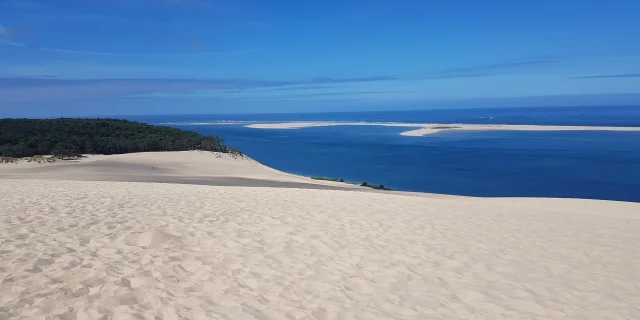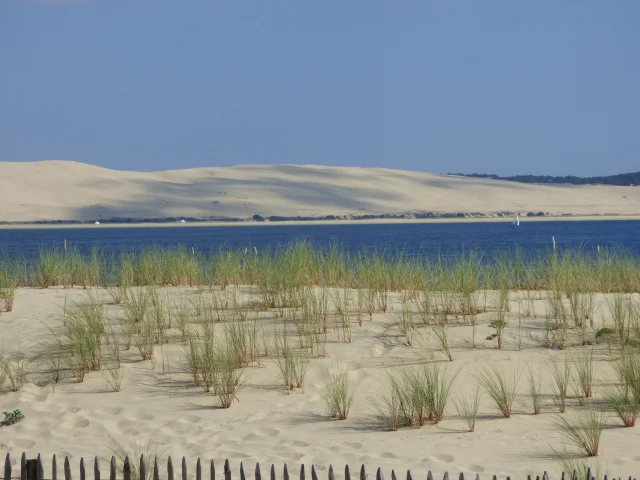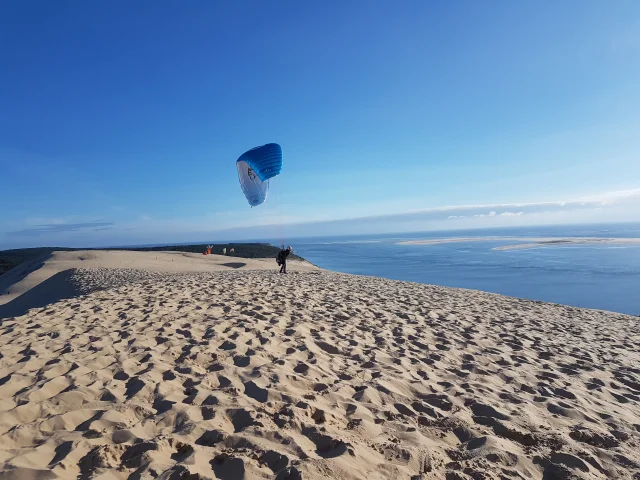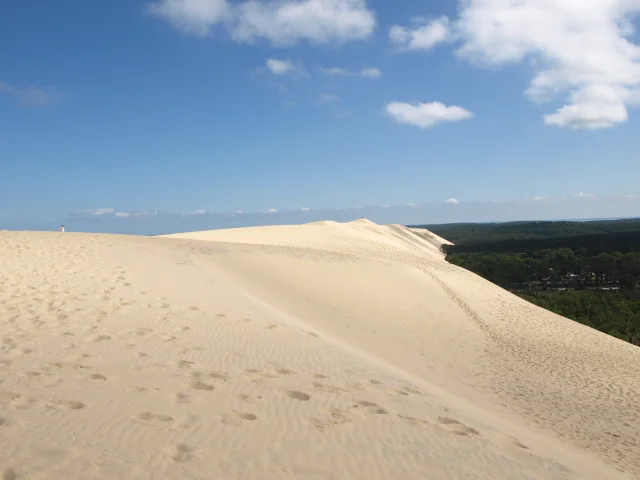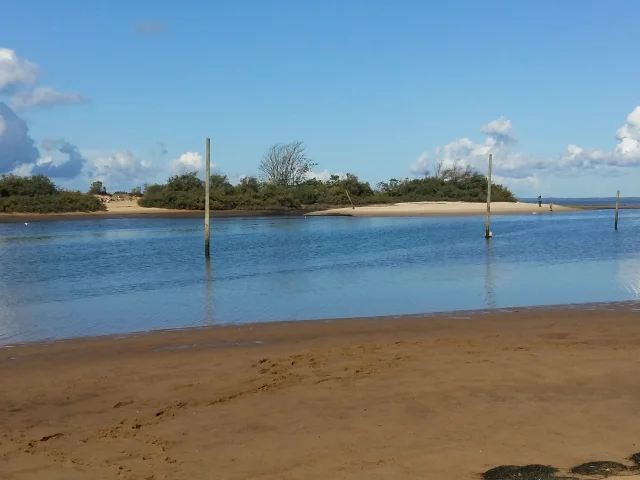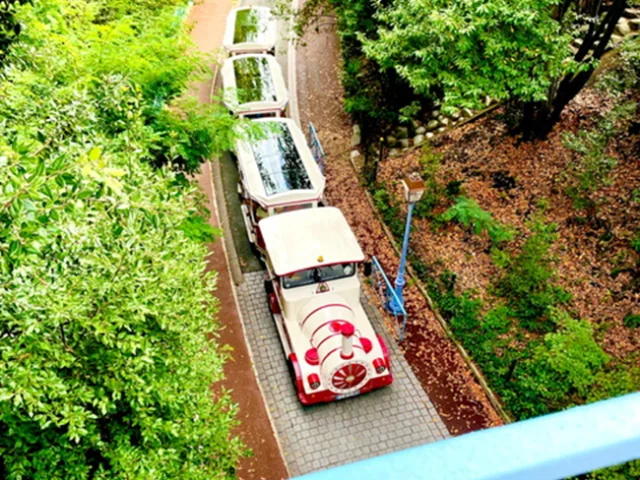A little history ...
The Dune du Pilat, located on the edge of the Bay of Arcachon, is the highest dune in Europe, reaching a height of around 102 meters. It was formed several thousand years ago by the wind and tides, which accumulated sand from the ocean.
Its landscape is in perpetual motion, slowly advancing inland, gradually covering the forest. This natural phenomenon is due to the prevailing winds and storms that move the grains of sand.
Classified as a “Grand Site de France”, the dune is an emblematicsite, attracting millions of visitors every year to admire the exceptional view it affords of the Atlantic Ocean, the Arcachon Basin and the Landes forest. It is also home to a fauna and flora adapted to the extreme conditions of the sandy environment.
Over time, the Dune du Pilat has become an essential natural site, both fragile and majestic, witness to the interaction between sea, wind and land.
